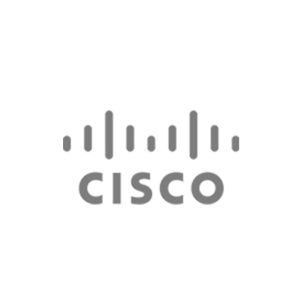Description
Who should attend
This training is for customers and Googlers who want to modernize, manage, and observe their containerized applications using Kubernetes in Google Cloud, AWS, Azure, and on-premises.
Prerequisites
- Completed Google Cloud Fundamentals: Core Infrastructure (GCF-CI) or have equivalent experience, and
- Completed Architecting with Google Kubernetes Engine (AGKE) or have equivalent experience
Course Objectives
- Explain each layer of the Anthos technology stack and the problems it is designed to address.
- Create, connect and manage Anthos clusters from multiple deployment environments.
- Load-balance clusters running in Google Cloud.
- Describe automating policy and security at scale with Config Management.
- Create multi-cluster networking architectures with Anthos Service Mesh.
- Deploy and run applications on an Anthos on-premises solution
- Monitor and troubleshoot applications running on an Anthos on-premises solution.
- Install workloads on Cloud Run and Cloud Run for Anthos.
- Configure and review logging, metrics, and monitoring for serverless computing solutions on Anthos.
- Install and use Migrate for Anthos to migrate workloads.
Outline: Architecting Hybrid Cloud Infrastructure with Anthos (T-AHYBRID-I)
Module 1: Introducing Anthos
Topics:
- Overview
- Anthos technology stack
- Anthos components
- Billing
Objectives
- Recognize the challenges of designing and building multi-environment solutions.
- Identify the 6 layers of the Anthos technology stack in use.
- Understand pricing.
Module 2: Anthos Environments
Topics:
- Anthos fleets
- Fleet networking
- Multi-cluster Service
- Multi-cluster Gateway
Objectives
- Create and use fleets
- Understand fleet networking
- Create and use multi-cluster services
- Create and use multi-cluster gateways
Module 3: Multi-cluster Concepts on Anthos
Topics:
- Containers and GKE review
- Anthos for centrally managed clusters
- Creating and managing Anthos clusters
- Anthos clusters on AWS
- Anthos clusters on Azure
Objectives
- Discover hybrid and multi-cloud locations where Anthos can manage containerized applications.
- Create Anthos clusters on Google Cloud and other public cloud providers.
- Securely access Anthos clusters
Module 4: Managing Configurations with Anthos
Topics:
- Challenges with configuration management
- Anthos Config Management
- Config Sync
- Hierarchy Controller
- Policy Controller
- Config Connector
- Blueprints
Objectives
- Understand the challenges of scaling multi-cluster, multi-tenant configurations.
- Centralize configuration management.
- Adopt a GitOps model to minimize configuration drift.
- Control and audit actions that different roles in your organization are allowed to perform in multi-cluster environments.
- Extend GitOps approach to centralized configuration management.
Module 5: Introducing Anthos Service Mesh
Topics:
- Introduction to Anthos Service Mesh
- Architecture
- Installation
- Life of a request in the mesh
- Mesh telemetry and instrumentation
- Anthos Service Mesh dashboards
- Anthos Service Mesh pricing and support
Objectives
- Understand the benefits of Anthos Service Mesh, including running distributed services across clusters and enhancing service observability, traffic management, and security.
- Install Anthos Service Mesh on different Anthos clusters and choose capabilities depending on the level of management and automation you want.
- Collect workload telemetry including metrics, traces, and logs, and learn to visualize your services on the Anthos Service Mesh dashboards.
- Understand Anthos Service Mesh and the capabilities, limitations, and costs of running it on different Anthos clusters.
Module 6: Anthos Service Mesh Routing
Topics:
- Networking and service discovery
- Anthos Service Mesh API resources
- Network resilience and testing
Objectives
- Understand how Anthos Service Mesh learns the network from Kubernetes and builds on top to provide advanced routing capabilities.
- Deploy mesh API resources such as the VirtualService, DestinationRule, Gateway, Service Entry, and the Sidecar to configure the mesh.
- Harden the mesh network by introducing new functionality such as request retries, request timeouts, and circuit breakers.
- Test the mesh network by creating failures and delays on specific services in order to improve overall resilience.
Module 7: Securing Network Traffic with Anthos Service Mesh
Topics:
- Security across services
- Authentication and encryption
- Service authentication in the mesh
- End-user authentication in the mesh
- Authorization in the mesh
- Bonus: Employee authentication and authorization in the mesh
Objectives
- Encrypt traffic between microservices to prevent anyone in the network from gaining access to private information.
- Authorize services and requests, ensuring that services only access the information that is allowed access from other services.
- Authenticate services and requests to verify trust among services in the mesh and among end users.
- Limit service access in the network so that granular controls over the communication can be established.
Module 8: Multi-Cluster Networking with Anthos Service Mesh
Topics:
- Fleet networking
- Single network east-west routing
- Multiple network east-west routing
- North-south routing
Objectives
- Understand how to do multi-cluster networking, both north-south and east-west routing, with different network configurations.
- Learn how to configure east-west networking on different Anthos clusters running on multi-cloud and hybrid locations with Anthos Service Mesh.
- Install Anthos Service Mesh on different Anthos GKE clusters, and choose the right network configuration depending on where you want to run your cluster.
- Combine Anthos Service Mesh with multi-cluster Gateways and multi-cluster Services (MCS) to seamlessly run distributed services.
Module 9: Introduction to Anthos Clusters on Bare Metal
Topics:
- Overview
- Use cases for clusters on-premises
- Anthos on bare metal specifics
- Components and services
- Support
- Billing
Objectives
- Understand on-premises use cases and deployment options
- Understand support options
- Understand the costs associated with deploying and using bare metal deployments
Module 10: Planning and Building the Admin Cluster
Topics:
- Architecture
- Resource requirements
- Setting up the admin workstation
- Building the admin cluster
- Troubleshooting the admin bootstrap process
- Additional architectural options
Objectives
- Understand the different configurations that are possible with Anthos clusters on bare metal.
- Describe the most common settings.
- Learn the compute, memory, networking, and storage requirements to deploy Anthos clusters on bare metal.
- Build and deploy the control plane for your Anthos clusters on bare metal.
Module 11: Adding and Configuring Clusters
Topics:
- Building the user cluster
- Enabling authentication
- Deploying applications
- Configuring storage
Objectives
- Build and create Anthos user clusters on bare metal.
- Deploy applications on your user clusters and expose them outside of the cluster.
- Authenticate to Anthos clusters on bare metal by using Google Cloud or thirdparty providers.
- Describe the different ways of configuring storage and launching stateful workloads in Anthos clusters on bare metal.
Module 12: Adding and Configuring Clusters
Topics:
- Observability
- Logging
- Monitoring
- Operations
- Security
Objectives
- Configure and use the Google Cloud Operations suite to view logs, errors, metrics, and alerts.
- Check cluster operations and cluster state.
- Perform cluster repairs.
- Understand how to update the cluster.
- Secure the cluster.
Module 13: Application Migration with Anthos
Topics:
- Modernization vision
- Workload discovery and migration assessment
- Migrating applications to containers
Objectives
- Understand benefits and challenges of containerizing applications
- Determine which workloads are a good or bad fit for migrations
- Use automated tools to assess a workload’s containerization fitness
- Plan a workload migration
Module 14: Modern CI/CD for Anthos
Topics:
- CI/CD in Google Cloud
- CI/CD in a private network
- CI/CD on-premises and multi-cloud environments
- Securing the software supply chain
- Deploying 3rd party software
Objectives
- Recall Application Deployment goals when working with microservicebased architectures.
- Identify the model and benefits of Cloud Marketplace.
- Explain manual (non-Marketplace) deployment patterns with Anthos Clusters.
- Describe an automated CI/CD architecture using Cloud Build.
Module 15: Serverless Computing Solutions on Anthos
Topics:
- Overview of serverless computing solutions and their associated Anthos components
- Install Cloud Run for Anthos
- Running serverless workloads on Anthos
Objectives
- Identify 3 workload challenges addressed by serverless computing solutions.
- List the Anthos serverless computing solutions components.
- Install Cloud Run for Anthos.
- Deploy, update, and adjust serverless workloads on Anthos.
- Use Eventarc to deliver events.
- List 3 best practices when running Serverless Computing Solutions on Anthos.




